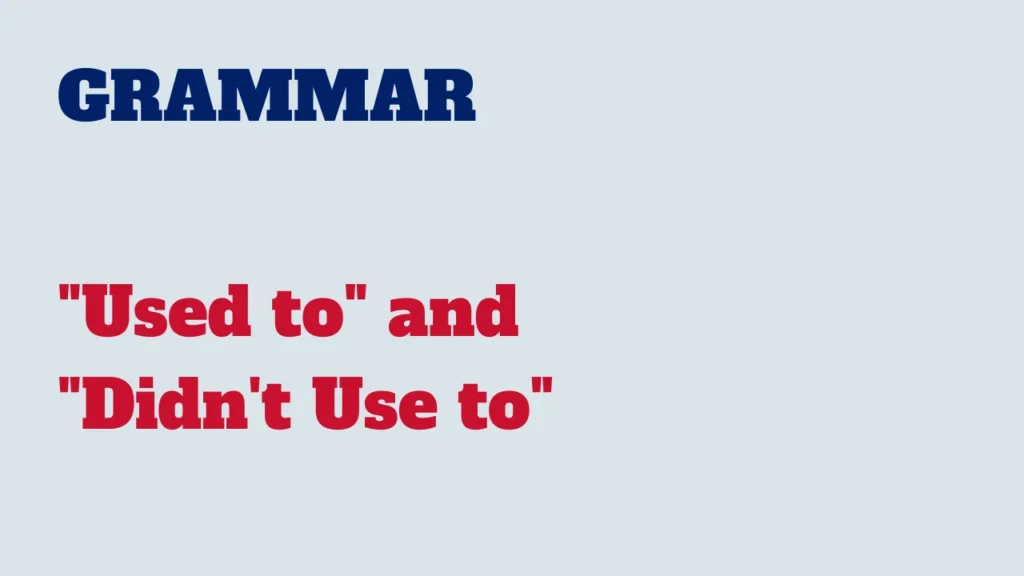“Used to” and “didn’t use to” are expressions used to talk about past habits, states, or situations that were true in the past but are no longer true in the present.

In this lesson, we will delve into the structure, usage, and common scenarios for both expressions.
“Used to”
Structure:
Affirmative: Subject + used to + Base verb
Negative: Subject + didn’t + use to + Base verb
Question: Did + Subject + use to + Base verb?
Examples:
Affirmative:
I used to play the piano when I was a child.
Negative:
She didn’t use to enjoy reading, but now she loves it.
Question:
Did you use to live in the city?
Common uses of “Used to”
Expressing past habits or routines:
“I used to go jogging every morning.”
Describing past states or conditions:
“The house used to be much quieter.”
Talking about past preferences or attitudes:
“He used to dislike spicy food.”
“Didn’t Use to”
Structure:
Negative: Subject + didn’t + use to + Base verb
Examples:
She didn’t use to eat vegetables, but now she loves them.
We didn’t use to have a computer at home.
They didn’t use to travel much in the past.
Common uses of “Didn’t use to”
Contrasting past and present habits:
“I didn’t use to enjoy watching documentaries, but now I find them interesting.”
Highlighting changes over time:
“They didn’t use to have smartphones in the ’90s.”
Emphasizing the difference between past and present states:
“The city didn’t use to be so crowded.
Understanding the use of “used to” and “didn’t use to” will help you talk about changes in habits, states, or preferences over time. Practice using these expressions to strengthen your ability to express past situations. Happy learning!



